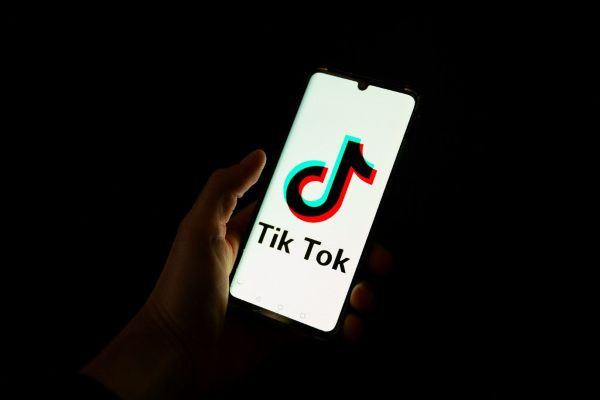Popular Reads
Top Results
Can't find what you're looking for?
View all search resultsPopular Reads
Top Results
Can't find what you're looking for?
View all search resultsLocal brands: Innovate or die
Time to get smart: Buyers look at a variety of cheap smartphones at a shop in ITC Roxy Mas, Central Jakarta
Change text size
Gift Premium Articles
to Anyone
T
span class="caption" style="width: 558px;">Time to get smart: Buyers look at a variety of cheap smartphones at a shop in ITC Roxy Mas, Central Jakarta. Indonesia is one of the biggest markets in the world for mobile devices, yet local players are mainly on the fringes of the industry, controlling the distribution side but not production. (JP/R. Berto Wedhatama)
Local brands need to up their game by churning out innovative smartphones as their traditional battlefield, the affordable feature phone market, is heading for a fall, experts say.
Market statistics have shown that the middle-lower segment, markedly those in second and third tier cities, has long been the biggest market for feature phones, especially local brands.
Sudev Bangah, head of operations at the International Data Corporation (IDC), said although feature phones fetched lower prices than smartphones, feature phones sold more units with around 84 percent of the market going to these simple devices.
The ability to capture this large market has catapulted local brands — Cross and Mito — into the top five mobile phone brands alongside Nokia, Samsung and Research in Motion (RIM), IDC data shows.
Janto Djojo, marketing director of Cross, said that although his products were manufactured in China, the brand was Indonesian. “Even the big brands are sourcing their phones from China,” he said.
He added that the company offered at least 45 models of feature phone.
“We introduce five new models to replace old ones every month because consumers get bored easily. Indonesians change their phones every nine months on average,” he said.
He added that Cross’ sales grew two-fold year-on-year in 2012, with Java contributing 55 percent to sales. The brand was expecting another good year in 2013 as purchasing power strengthened, he said.
A study by the Bank of Indonesia (BI) rated 61 percent of the population as middle class. McKinsey predicts that 90 million people will enter the consumer class — or those with an annual net income of US$3,600, by 2030.
To capture those with rising incomes Cross has expanded their product line to include at least seven models of Android smartphone, priced less than Rp 1.5 million ($154.5), he said.
The expanding smartphone market, a report by Accenture pointed out, was aided by falling device prices. Their study reported that the smartphone market share will expand to 42 percent as average selling prices tip $131 by 2016.
Jean-Christophe Lebraud, a partner at McKinsey & Company, said that the Android operating system has been instrumental in the rise of local brands by providing a “compelling” open platform.
The IDC estimates that Android commands 64 percent of the smartphone market. “This is a good example of the local market leveraging on foreign platforms,” Lebraud told The Jakarta Post.
He added that local brands, unlike Apple or Samsung, benefited by serving market niches whose needs could be narrowly targeted.
However, Naveen Mishra, industry principal for ICT practice at Frost & Sullivan, said that local brands would eventually have to invest in research and development in the application-driven smartphone world.
“Applications will be a key differentiator between brands,” he said.
Martin Chirotarrab, president of Nokia Indonesia, said the mobile phone maker’s strategy was always on providing locally relevant solutions with the aid of local developers.
Nokia’s propriety applications available for the domestic market include Nokia Maps and Nokia Life Tools. “We are working with more than 12,000 Nokia developers in Indonesia,” he said.
If local brands failed to invest in innovation, global brands, with their propriety and innovative applications such as maps, would gradually encroach upon the market share of local brands, analysts said.
However, local and global brands do not only differ in research and development but also business processes.
Janto pointed out that Cross ran their distribution networks, instead of collaborating with large-scale distribution companies — the norm for foreign brands.
“We have our own distribution networks because we want to maintain control over our brand,” he said, adding that Cross had roughly 80 master dealers distributing the mobile phones.
Meanwhile, Sandy Lumy, president director of Lenovo Indonesia, said large distribution companies were the key to their Android smartphone business.
Lenovo, he added, partnered with mobile phone distributors such as PT Trikomsel Oke (TRIO) which runs at least 1,100 retail outlets.
“We are also supported by our established sales and after-sales network,” he said.
Hastings Singh, vice president of RIM South Asia, pointed out that Blackberry manufacturers worked closely also with carriers to enhance the smartphones’ performance over the network.
“We also work with carriers to optimize Blackberry tariffs,” he said, adding that Blackberry tariffs in Indonesia were one of the lowest globally.










